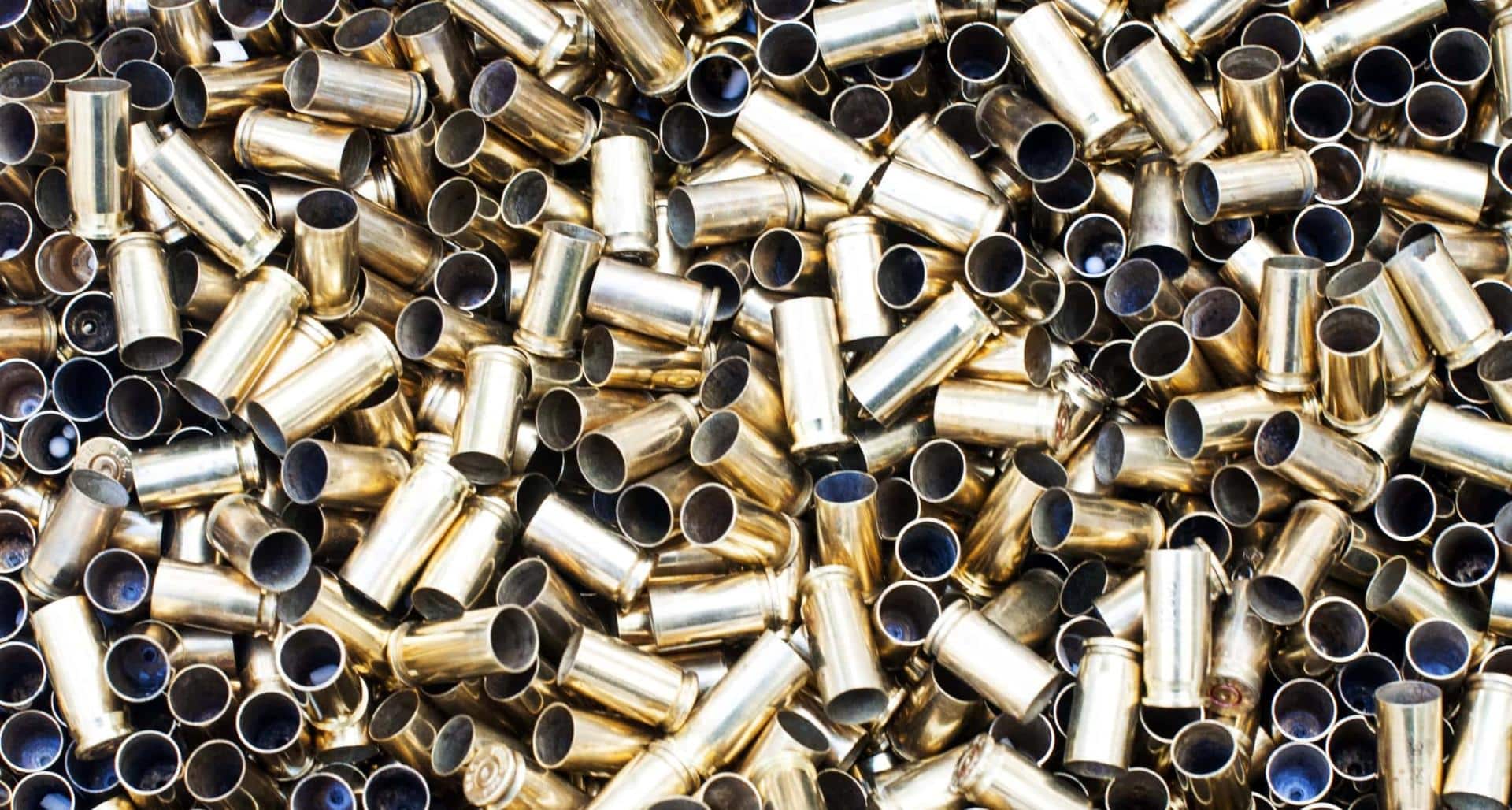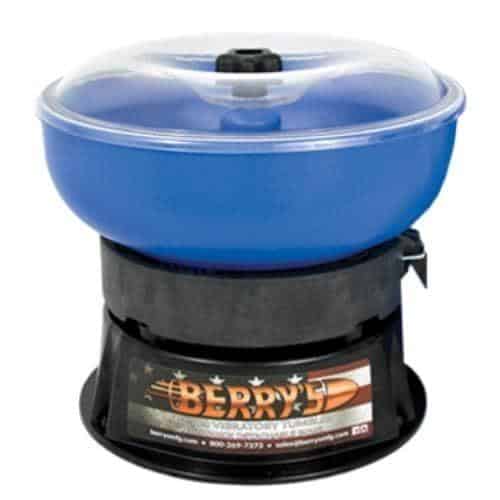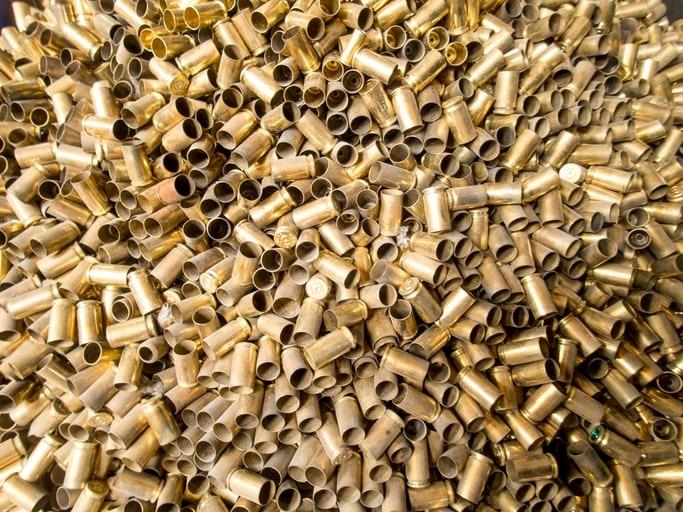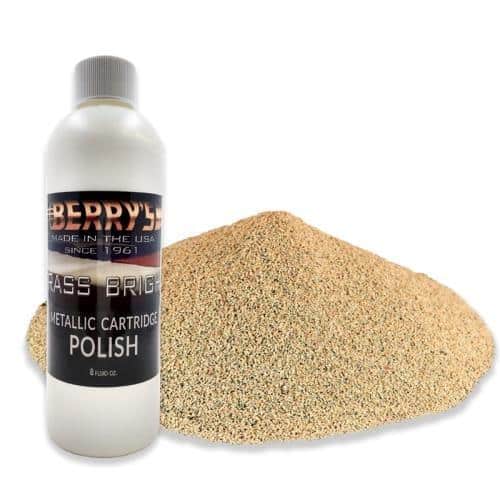Your cart is currently empty!

Wet Tumbling Brass vs Dry Tumbling Brass: What’s the Difference?
What is the difference between wet tumbling brass and dry tumbling brass? And which is better? At the core of those questions is the desire to reload your old, spent casing. If you are someone who is concerned about the rising cost of ammo, then reloading your old casing is one way to save some money and still have quality ammo available to target practice, hunt, or for home self-defense.
In this article, we will explore the processes for each and discuss which is better for getting those shiny brass casings.
How to Tumble Brass

When you choose a tumbler, you have two real choices – one that tumbles or spins horizontally or one that vibrates – without spinning. The vibration tumblers such as the QD-500 Brass Tumbler that Berry’s offers are a good choice. It is well-made and at around $90 it is about $60-100 cheaper than a spin-tumbler. Both types of tumblers will work fine for cleaning brass. The vibration tumblers tend to be dry cleaning whereas the horizontal tumblers can be wet or dry.
SETTING UP FOR DRY TUMBLING
To set up the dry tumbler, you would add a cleaning media – stainless media – SS pins or SS shot – corn, nutshells – walnut media, almond shell media, etc. To that, you add a cleaning compound – generally a gel or a small amount of liquid. Then you add the bass casing. You put the lid on and let it vibrate for the recommended time. When it is done, check your casing to see if they are as clean as you want them to be. If not, you can vibrate them longer. If you find you are not achieving the cleanliness results that you desire, you can consider switching either the dry media or the cleaning additive that you add to the tumbler.
SETTING UP FOR WET TUMBLING
To set up the wet tumbler you will need cold water, a cleaning agent, and cleaning media. Never use hot water. Generally, dish soap – and the original formula of Dawn Dishwashing Liquid is a good choice – and stainless steel pins or shot that is made for tumbling. There are other options, and you will have to play around with the combination to find what works best for you. The answer will be in the results. Personally, the original Dawn Dishwashing Liquid and stainless steel grains are what work best for me. I clean a variety of metals and Dawn does not cause additional reactions to reactive metals such as brass.
Add the appropriate amount of stainless steel to your tumbler – the amount will vary by size and the size of the load. Do the same with the water. Some people measure by volume and others by weight. Either way, start with the amount of brass you want to clean and then fill in the volume or weight of the water and the volume or weight of the cleaning grains.
NOTE: The amount of what you add to the tumbler will vary based on the amount of brass you are cleaning. For that reason, it is difficult to say put this much in and proceed. You will find that you come up with a formula based on the manufacturer’s instructions for your tumbler. Even when you have them figured out, it may change slightly based on the caliber of the casings you are cleaning. Larger caliber casings may take less liquid and grains vs. smaller caliber casings, and both are dependent on how much brass you put into the tumbler.
Wet Tumbler vs. Dry Tumbler
There is a lot of online debate over which is better to clean brass casings the wet or dry tumbler. We will go into some differences in a moment. In the meantime, understand that you will do fine by your brass casings with either.
1.The Primer Pocket Argument – When you wet tumble, the process cleans the primer pocket. When you dry tumble, the primer pocket will also clean, but not as well as with the wet tumble method. To compensate and really as a matter of quality control, you would want to use a primer pocket brush to ensure that the primer pocket is cleaned regardless of which method you choose. You will probably have around 50-100 casings per tumble load, and cleaning with the primer brush takes just a few seconds per casing. Overall, we are not talking about that much time, and you get the best results possible by using the primer brush anyway.
2.Brass is Reactive – As a metal, brass will oxidize when exposed to many substances, including air. The dry tumbling method introduces the least amount of oxidization to the process of cleaning the casings. Water, which you add to the wet tumble process can change chemically based on casing the dirty brass residue, cleaner, etc. When that happens, you can introduce oxidative substances to the brass which will cause pitting and potentially shorten the life of the metal. Does this happen a lot? No, not really. If you use an approved cleaner with filtered or distilled water, then you will likely not run into excessive oxidation. The plus with wet tumbling your brass is that the liquid fills into small spaces, such as the primer pocket or flash hole easily. There is also the risk of dry media remaining in small places, such as the primer pocket. Always – clean the primer pocket using a primer brush.
Which method is better for Cleaning Brass Casings?

Which has the better results for cleaning brass casings? Personally, we prefer the dry method, but if you follow the process outlined by your tumbler’s manufacturer, and you stick to the right ratio of media, cleaner and brass (dry tumbling) or clean water, cleaner, and brass (wet tumbling) the results should be adequate. The brass casings will clean up nicely and be ready for reloading. You can separate the casings from the media by using a media separator, which makes the process easy.
What makes either process better is the user experience. You can start off with less cost by going with the dry tumbling method. However, you will have to replace the media you use in your tumbler more often. If you are using stainless steel in a wet tumbler, it will last for months if not years.
However, your cases will need to be dried thoroughly after they are wet tumbled. This adds time to the process and prevents oxidation on the brass. It also ensures that no moisture will end up in your finished cartridge, which can cause issues with performance and could be dangerous in some circumstances.
Note: If you opt for stainless steel as your media for either a rotary tumbler or a vibration tumbler please note:
In rotary tumblers, use Pin Stainless Steel Media. The media is in small SS pin-size lengths.
In vibration tumblers, use stainless steel shot. The Media is round, and it will work its way into the inside of casings and will clean primer pockets too.
Stainless steel media can be cleaned and reused over and over.
Pistol and Rifle Brass Casings Tumble Cleaning Tips
Always tumble brass casings that are the same caliber. Never mix the calibers of the casing in the tumbler or in a vibration tumbler. If you mix the caliber of the casings in a tumbler – either the wet or dry versions – the casing will nest. Once that happens it is difficult to get the casings apart, and you may have to toss out the casings and start again. At the very least, the nested casing will need to be re-tumbled for cleaning. It is easier to separate out casing into a gallon bucket so that you can see how many casings you have before you start the cleaning process.
Always Clean Brass Casings Before Reloading – Pistol Brass is a soft metal and if the casing hits the ground when the shell is expelled from the gun, it is hot. All types of materials can melt onto the brass, including sand and silica. Clean cases before reloading means that when you seal the round, the powder and primer will remain safe from the elements.
Always clean the tumbler between brass casing cleanings. Never reuse dirty water in a dry tumble or vibration cleaning process.
If you want your brass casing to be shiny and like new, use citric acid as the cleaning solution. You dissolve powdered citric acid in water and add it to the wet tumbler solution.
The third option to clean brass casings is to clean them by hand. The process is not difficult, but it can be time-consuming, especially if you have a lot of brass casing to clean. There are ultrasonic cleaner tools that help, and Berry’s offers a complete line of brass casing cleaning tools and equipment, including the vibratory tumbler, cleaning media, and cleaning solutions. Explore all of your options for cleaning brass casings and reloading your own rounds by visiting us online and shopping our products.
Remember that we are available to answer your questions and discuss products and their uses.

